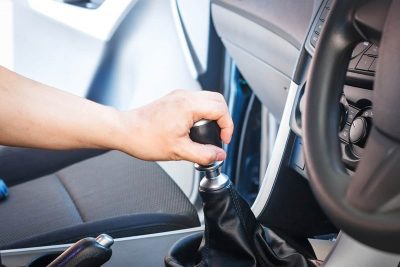The automotive world is vast, filled with various types of vehicles designed to meet diverse needs and preferences. One category that stands out for its versatility and robustness is Sport Utility Vehicles, or SUVs. These are large vehicles renowned for their spacious interiors, off-road capabilities, and typically higher driving position. Yet, beneath the hood, their technical specifics vary significantly, particularly regarding transmission.
The Transmission Control Module (TCM) plays a vital role in controlling your vehicle’s automatic transmission system. Issues with the TCM can lead to noticeable performance problems, making it essential for any car enthusiast to understand how to diagnose and resolve these problems. One method of resolving TCM problems is by reprogramming it.
The optimal direction of transmission cooler flow is from the transmission to the cooler and then back to the transmission. This allows the transmission fluid to: Absorb heat from the transmission. Get cooled in the cooler. Return to the transmission to repeat the process
Yes, you can add transmission fluid when the car is hot, but it’s not typically recommended. It’s best to check and add the fluid after the car has warmed up to its operating temperature but isn’t excessively hot.
In the automotive world, transmissions play a crucial role in controlling the power generated by the engine and transforming it into usable force. Among various types of transmissions, Dual-Clutch Transmission holds a special place for its efficiency and smooth operation. It merges the best of manual and automatic transmissions, offering both performance and convenience.
CVT, or Continuously Variable Transmission, is a unique type of automatic transmission that provides more efficient and smoother power delivery compared to traditional transmissions. Some of the most well-known cars with CVT transmission include:
When your transmission goes out, your vehicle can’t efficiently convert and distribute power. You may experience trouble shifting gears, unusual noises, or even a complete loss of ability to drive.
Yes, it is technically possible to put an automatic transmission in a car that initially has a manual transmission. The process, known as a transmission swap, can be complex and expensive, with costs generally ranging from $1,500 to $5,000, depending on the specifics of the vehicle and the parts involved.
Today, we’ll discuss the cost specifics of replacing different types of car transmissions, factors influencing the overall cost, and provide insights to help you decide whether replacing your car’s transmission is a financially sound decision.
Needle bearings are specialized types of bearings featuring slender, cylindrical rollers. They are used to reduce friction and handle heavy loads in car parts like transmissions and wheel hubs, ensuring your vehicle runs smoothly.
A gear ratio is the relationship between the rotation of the input gear (engine output) and the output gear (wheels). Essentially, it determines how many times the engine needs to turn for the wheels to complete a full rotation. A gear ratio calculator is a tool that can easily determine this ratio, simplifying maintenance decisions and enhancing your car’s performance.
Electric cars do have transmissions, but not in the traditional sense. Unlike conventional cars that use multi-speed transmissions, most electric vehicles utilize a single-speed transmission or direct drive. This mechanism simplifies power delivery, increasing efficiency and reducing maintenance needs.











